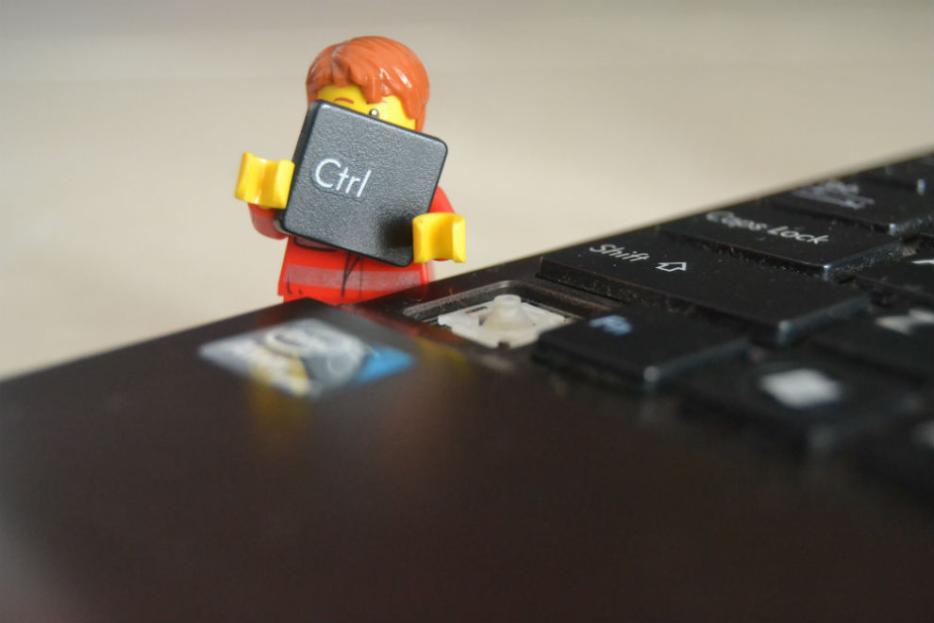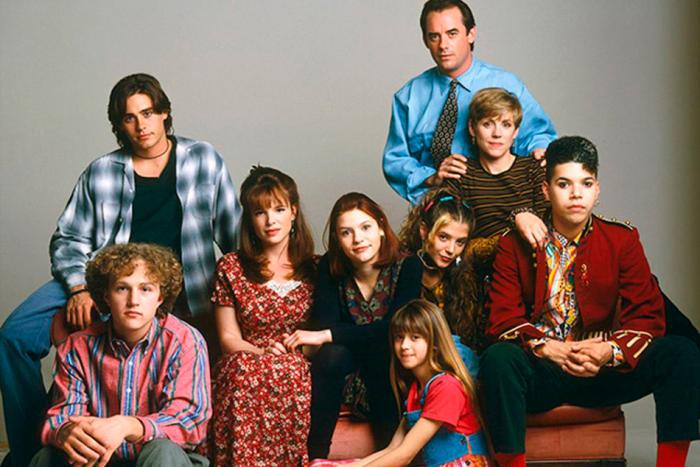The first time she had a panic attack, Michelle Daniel-Newman thought it was the flu. She was in her early twenties and on her way to a downtown Toronto nightclub when the symptoms started. It was 2001; she makes a point of emphasizing that it was around the time of 9/11. Inside the club, it only got worse. She didn’t understand what was going on. “It was like an out of body experience,” she says. Crying, and scared, she drove back home to Thornhill, a suburb of the city, deeply unfamiliar with what she was experiencing. As her anxiety and panic continued over the days and weeks that followed, her reaction was to close off from the world. “I got to the point where I did not want to leave my house.”
When she finally opened up to the idea of help, it was hard to find. “I remember one day I felt like I hit rock bottom,” she writes in an article for Pink and Blue Magazine. “I was desperate to talk to someone. I was ready.” She drove to a therapist’s office. “I told the receptionist that I needed to see the doctor right away. Her response was ‘I’m sorry, we can’t see you. Why don’t you go to the ER and be seen by the doctors there?” The experience of being turned away made an impression on her. “In emergency you’re being pushed and pushed. You’re not taken seriously. When you’re ready to accept the help, and you don’t get the help you need, you’re crushed.” She walked outside, sat in her car and cried for hours. “It was shit. Complete shit.”
For years, she struggled to build her life, to interact with the outside world. Going to doctors and therapists eventually helped, but not as much as she would’ve liked. Nothing seemed to work. Then, two pieces of news, delivered in quick succession, changed her world. The first: in late 2007, a doctor told her that she had cervical cancer. The second, which she learned after waking up from surgery for the cancer: she was two-and-a-half months pregnant. “It was the most fucked up experience of my entire life.”
And then a revelation came in, of all places, a karaoke bar.
“Have you ever heard that song, ‘Don’t Stop Believin’?”
Daniel-Newman first heard the Journey anthem in 2009, and it gave her something she was desperately lacking: hope. It didn’t cure her of her mental illness, nor did it aid her recovery from cancer, or make the prospect of an unexpected pregnancy any less daunting. What it did was spark something in her—something that told her that all those things could be beaten, and that she had the strength to do so. Though she is not particularly religious, she calls it a sign from God.
*
Anxiety, depression and other forms of mental illness are hard to talk about. “The depressed person was in terrible and unceasing emotional pain, and the impossibility of sharing or articulating this pain was itself a component of the pain and a contributing factor in its essential horror,” wrote David Foster Wallace in his 1998 story, “The Depressed Person.” Empathy has its limits. Describing the precise way that your own brain tortures you in terms that someone can understand and process can be almost impossible—can words quite capture what it feels like when every cell in your body feels individually and uniquely nauseous?
For most people, building a support network is a crapshoot, and often they only end up with a gallery of uneasy voyeurs who can look but when it comes down to it, do not (or cannot) truly understand what they see. Living with anxiety, depression, panic disorders—that’s hard. Personally, there have been times when I’ve wondered how long I was going to be able to handle my own anxiety and depression, whether I was ready to take on a whole life with a brain that feels mis-wired. Explaining it to people is hard. Asking for help, and articulating the kind of help you need, is hard. The darkly ironic challenge of mental illness is that the illness itself is an obstacle to seeking help: making the people you love most feel, at the moment you need them most, a whole lot like strangers.
Misery might love company, but suffering demands understanding. By and large, the mental health system as it exists today fails to acknowledge the fact that many people struggle to build support networks, because building support networks is hard if nobody in your life understands what you are going through. Heretohelp, a government mental health initiative in British Columbia, notes on its website that “people living with depression tend to report fewer supportive friends, less contact with their friends, less satisfaction with their friends and relatives, lower marital satisfaction and confide less in their partners.” How can you effectively build a support network if you can barely leave the house?
*
In January 2015, Daniel-Newman teamed up with her therapist and close friend, Melanie Tinianov, to create a Facebook group called Anxiety & Panic Disorder Support, a forum for members—who span the globe, from North and South America to Europe and Asia—to open themselves and their illnesses up to strangers, seeking advice and guidance from people with first-hand experience. I joined in the spring; it grew quickly, gaining more than two thousand members by the end of 2015. Today, the group has grown to over three thousand.
Often, the first person to respond is Daniel-Newman herself. During much of her day, which the 38-year-old mother of two spends at home working as an independent contractor for an at-home beauty products company, she keeps up with the group, offering advice to just about anybody who asks for it. That she’s not a licensed therapist or psychologist seems to be a technicality, rather than a major hurdle, to Daniel-Newman; she wants Anxiety & Panic Disorder Support to go big. Though she isn’t a professional, she seems to have an appetite for it—she wants to one day open up a brick and mortar 24/7 clinic where people can go for support. “I see so many suffering,” she says, “and they’re suffering alone […] What I needed [when my illness was at its worst] is what it [this group] today.”
It’s a model meant to bring people together in a way that may improve upon the traditional in-person support network structure built primarily out of friends and immediate family. The philosophy is not dissimilar to that of Alcoholics Anonymous: that first-hand knowledge of suffering is, in some way, deeply valuable to the healing process.
These online support groups seem to exist at the intersection of traditional group therapy, personal networks, and social media, an even newer extension of a new idea: that social care—treating mental illness partly through the power of social interaction—can possibly be as effective, if not more, than the traditional doctor-patient structure.
"Students are so lucky. The general public gets a ten-minute pill-push."
The form they take can differ widely. While Anxiety & Panic Disorder Support lives on Facebook, there are various traditional Internet forum boards and forum-style sub-Reddits devoted to mental illness as well, such as r/depression, r/anxiety, and r/bipolar, or apps like 7Cups, which connects people suffering or in need of support with one of 140,000 trained listeners. The common thread that connects them is that they seek to build a community of suffering strangers.
Those who have suffered—and continue to suffer—from mental illness often have a sharpened understanding of what others going through the same thing might need. Since many of them have experienced existing structures and traditional therapy already, they have a keen sense of where the gaps in mental health care exist and what the best way to fill those gaps might be. It isn’t that apps like 7Cups, or groups like Anxiety & Panic Disorder Support are meant to be improvements upon therapy—Daniel-Newman and Tinianov insist that traditional therapy is still a crucial part of mental health care—but rather that they provide an outlet within the existing therapy paradigm that emphasizes one-on-one care, but struggles to provide it at the scale required. “There’s nobody stopping us from doing a better job of caring for one another,” says Glen Moriarty, founder and CEO of 7Cups.
Daniel-Newman echoes this sentiment; she guesses that her group’s success in helping is just as much about giving people the feeling of having helped as it is about the feeling of having received help. “This group changed my whole life,” she says. “It made me feel like there’s more of a purpose here on earth for me.”
It’s a populist take on mental health care: The Internet as a tool to fight mental illness, rather than just a place of refuge.
*
The front lines of the health care system can often seem ill-equipped to handle mental health concerns. If you’re lucky enough to have a family doctor (which in 2010, five million Canadians over the age of twelve did not), and that doctor is able to see you in a timely fashion (which is the case for less than fifty percent of the Canadian population), there is a significant disparity between the availability of different types of treatment given to mental health patients. According to a 2012 Statistics Canada study, ninety-one percent of Canadians suffering from mental illness felt their needs for medication were met; only sixty-four percent said the same about therapy. Moreover, money can be an insurmountable hurdle: despite the country’s reverence for its health care system, not a single Canadian province provides coverage for anyone who seeks therapy outside of a doctor’s office.
Angela Townend, a social worker with the London Family Health Team,11Who, full disclosure, has been involved in my own treatment. says colleges and universities have not been able to adequately deal with the number of students looking for care. “The waitlist for counseling at Western [University, located in London, Ontario] is horrendous,” says Townend, who places some blame on a lack of financial investment in mental health programs on campus, but concedes that there is a silver lining to the fact that Western has such a long waitlist: It means, at least, that kids are asking for help.
In both Canada and the United States, the problem of mental illness on university campuses is striking. A 2002 study found that between thirteen and eighteen percent of Canadian students suffer from mental illness, and according to Statistics Canada, the country has the third-highest suicide rate among adolescents in Organization for Economic Co-operation and Development member countries. Maclean’s reported in 2012 that Ryerson University in Toronto saw a two-hundred-percent increase in demand for counseling, and that up to twenty-five percent of Canadian university students will experience a mental health problem. (And it is a plausible argument that students, who have direct access to counseling services, have a pretty good deal: “Students are so lucky,” says one Western University science student, noting that he gets appointments whenever he wants, while the “general public gets a ten-minute pill push.”)
Broadly speaking, the conversation surrounding mental health has focused heavily on de-stigmatization, in hopes that those who need care won’t have to suffer in silence and will be able to ask for help when they need it, without fear of judgment. In effect, there has been a scale-up of the conversation—millions of text messages, tweets, and Facebook posts were shared in the name of Bell’s #LetsTalk campaign, for example—without the corollary scale-up of the actual resources required to provide help to those who most need it. The ongoing tragedy in Attawapiskat and other First Nations communities provides stark evidence that care is often concentrated in urban centres, inaccessible to those in more rural areas. But even in cities, it would be wrong to assume that care is easily available. For its 20,000 patients, for example, the London Family Health Team is able to provide 2.6 social workers—two full-time and one part-time practitioner. Across Canada, the numbers are dire, and getting worse. In 2010, the number of psychiatrists was 13.9 per 100,000; by 2030, the CMA estimates that number will fall to 11.9. Nationwide, non-urgent cases take an average of eleven weeks to be addressed by a psychiatrist.
*
Glen Moriarty of 7Cups invites a thought experiment: “Imagine we could delete the concept of therapy,” he asks. “Knowing what we know now, and what we have now—imagine creating a new mental health system.”
In the past decade or so, this idea has gained traction. “Having social ties can promote feelings of attachment and companionship, enhancing one’s sense of purpose and self-esteem. For individuals experiencing stress, one’s social network can provide personal support and enhance coping,” writes the Canadian Mental Health Association, in “Mental Health Promotion in Ontario: A Call to Action,” published in 2008. “Social contacts also serve as resources for sharing information that can enhance one’s ability to deal with adversity, therefore moderating distress.” As social networks themselves exist increasingly online, so too must the social care.
Social care is a broad term. Townend, Daniel-Newman, and others I spoke with all acknowledged that it is a crucial aspect of mental health care, but differed when it came to their own interpretations of it, as well as the ideal form for it to take. But the concept, at its base, is that a thriving social network can be highly beneficial to one’s mental health care. Increasingly, the health care field is turning away from archaic paradigms of mental health—such as the notion that it is a simple chemical misfiring—and towards trying to see mental health existing within a person’s broader social life. Along with freedom from discrimination and violence and access to economic resources, one of the Canadian Mental Health Association’s three most significant determinants of mental health is social inclusion.
“We don’t let people say ‘Hey, it’s going to be okay.’”
The most successful support groups on the Internet, however, do not, by and large, grow out of existing social networks, but rather out of groups of unfamiliar strangers.
Anonymity (or in Facebook’s case, a lack of personal familiarity) is a positive force when discussing mental illness. “Anonymity kills stigma,” says Moriarty. Likewise, many of 7Cups’s listeners are “people who got help and wanted to give back,” he says. “People are afraid of being judged. If you don’t have someone in your immediate life who gets you, talking to someone who doesn’t judge you can be powerful.”
This describes Daniel-Newman, too. She does her best to be the one person that members of her Facebook group can go to, no matter what. In an average day, there are anywhere between ten to twenty posts, and a great deal of Daniel-Newman’s time is taken up with monitoring discussions and, in many cases, personally responding: her phone is “constantly going,” she says. She understands how hard it can be to involve loved ones in your own recovery. “You don’t want to burden people. It’s a lot easier sometimes dealing with strangers. They’re strangers, but they connect,” she says, leaning into the word. “You connect instantly. You share that common feeling, and you have that bond.”
The ability of friends and family to provide support is often limited by their own experiences of mental illness. Understanding mental illness is different from experiencing it, and given that for many people expressing how and why they are suffering is difficult, this distinction can feel excruciating. Many depressed people to whom I’ve spoken are (as, indeed, I am) prone to feeling like their pain is unique, as if nobody has ever felt so plainly awful in the specific way they do. Despite recognizing the idea as ridiculous, it can often make talking about it all the more difficult. Networks can ease the burden placed on one’s own social circle.
Or, as Townend puts it, “Friends and family can’t always be the place where you go to deal with that stuff. You can burn them out. You need your friends and family for a lot of the fun, laid-back stuff.”
For better or worse, online support groups attempt to help build a social support network by catering to the anti-social impulses of the mentally ill. “I like to say I have a theoretical support network. Which means that theoretically, I COULD call people,” wrote one poster on Reddit’s r/depression sub-Reddit last year. “Practically, I’m better off taking a couple Benadryl and a Xanax and passing the fuck out. It’s quicker, and cheaper and it means I don’t have to put the masks on first.”
*
Using the Internet as a vehicle poses obvious challenges. Mental health professionals such as Townend acknowledge that the web can often be a wild west or sorts—a fact which has to be considered when she directs patients online. “I’m always a bit wary, especially with younger patients,” she says, noting that sending someone online is essentially sending someone into a space that they can’t control. She, however, thinks moderation can mitigate that. “That’s a good side of the internet,” she says, “there are really good support networks that get monitored and moderated.”
What it means to be monitored and moderated, though, can differ. Implicit in the act of moderating is creating a particular type of safe space, but there is little agreement about what that should actually look like. For many years, Erin (who does not want her last name published for privacy reasons) was a user on the r/depression sub-Reddit, and her frequent participation led her to become a moderator there four years ago. She understands that in an open forum, controlling the type of support that users receive is important. On r/depression, Erin tries to de-emphasize the positivity that Daniel-Newman tries hard to inculcate.
“We don’t let people say ‘Hey, it’s going to be okay,’” Erin says. Her users find that far less helpful than those giving the advice tend to think it will be, and less helpful than someone simply understanding what they’re going through. There are some strict rules she and her fellow moderators follow—no religion, no discussion of suicide methods, and no personal information—but beyond that, they try to be “as lenient as possible when people need help,” she says, but “much less forgiving when people are trying to help.” She admits that over-moderation has its drawbacks: when people transgress group rules, they often do so without any malice. Those moments are great opportunities to help educate people on best practices when it comes to supporting those with mental illnesses.
Daniel-Newman and Tinianov insist that their only rule is that nobody is allowed to give medical recommendations of any sort. In practice, though, their group seems laden with all sorts of invisible rules and ideas about what it ought to be. Arguments are discouraged—anything they don’t agree with is liable to be deleted. I was even kicked out of the group for reaching out to other members of the group to talk about what it means to them. It remains unclear why this was an offense worthy of exile—especially since I’d cleared it with Daniel-Newman before posting. Despite numerous conversations about ethical considerations, I have not been allowed back in, despite repeated assurances from the admins that this will happen. Daniel-Newman and Tinianov’s guardedness and skittishness underscores a point: the world is a scary place for people who are suffering from mental illness, and even well-meaning gestures can seem very much like an intrusion. It was a reminder of how easy it is—even for someone like me, someone with my experiences—to underestimate the difficulty of being open about your own pain.






